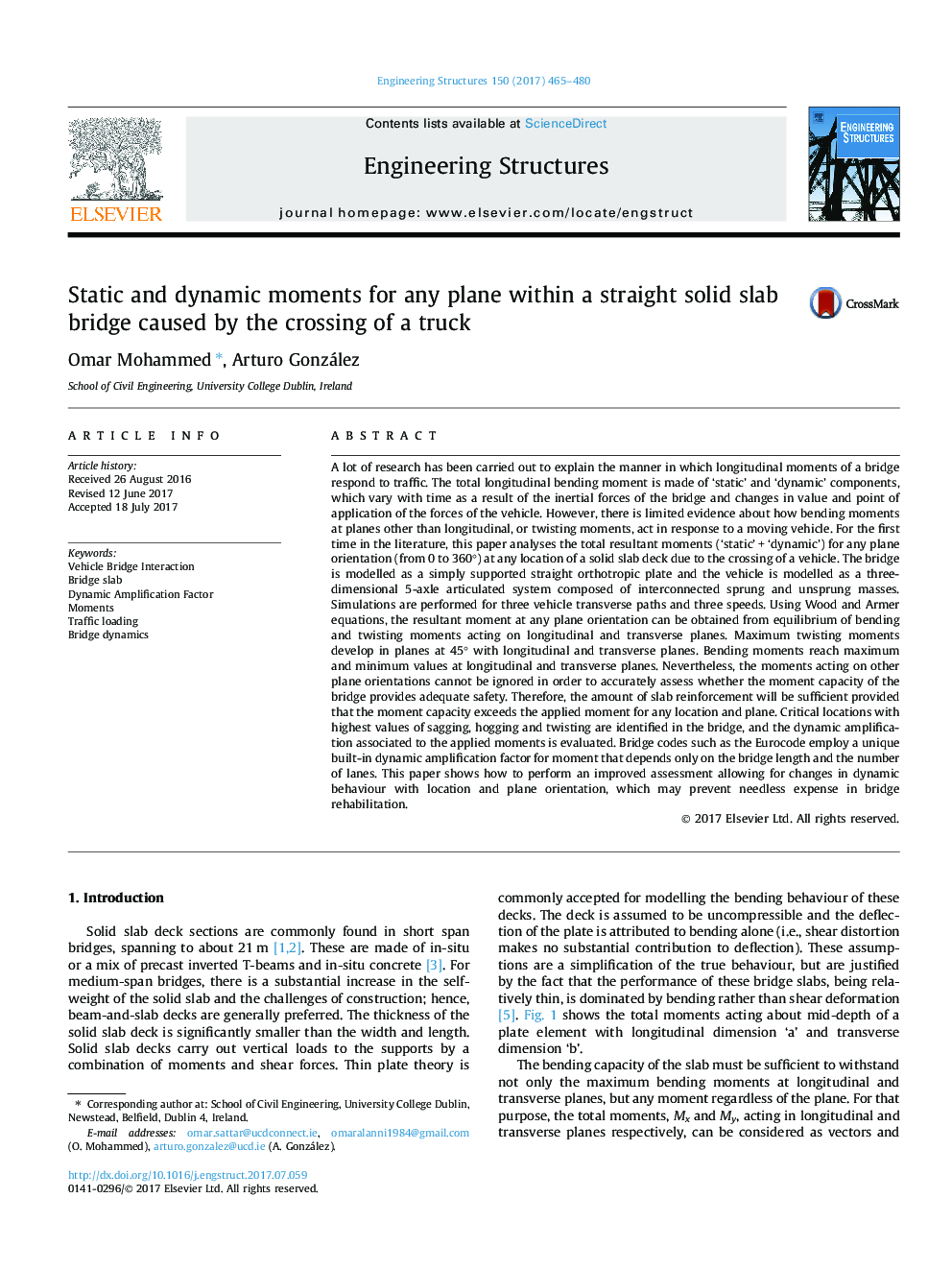| Article ID | Journal | Published Year | Pages | File Type |
|---|---|---|---|---|
| 4919846 | Engineering Structures | 2017 | 16 Pages |
Abstract
A lot of research has been carried out to explain the manner in which longitudinal moments of a bridge respond to traffic. The total longitudinal bending moment is made of 'static' and 'dynamic' components, which vary with time as a result of the inertial forces of the bridge and changes in value and point of application of the forces of the vehicle. However, there is limited evidence about how bending moments at planes other than longitudinal, or twisting moments, act in response to a moving vehicle. For the first time in the literature, this paper analyses the total resultant moments ('static' + 'dynamic') for any plane orientation (from 0 to 360°) at any location of a solid slab deck due to the crossing of a vehicle. The bridge is modelled as a simply supported straight orthotropic plate and the vehicle is modelled as a three-dimensional 5-axle articulated system composed of interconnected sprung and unsprung masses. Simulations are performed for three vehicle transverse paths and three speeds. Using Wood and Armer equations, the resultant moment at any plane orientation can be obtained from equilibrium of bending and twisting moments acting on longitudinal and transverse planes. Maximum twisting moments develop in planes at 45° with longitudinal and transverse planes. Bending moments reach maximum and minimum values at longitudinal and transverse planes. Nevertheless, the moments acting on other plane orientations cannot be ignored in order to accurately assess whether the moment capacity of the bridge provides adequate safety. Therefore, the amount of slab reinforcement will be sufficient provided that the moment capacity exceeds the applied moment for any location and plane. Critical locations with highest values of sagging, hogging and twisting are identified in the bridge, and the dynamic amplification associated to the applied moments is evaluated. Bridge codes such as the Eurocode employ a unique built-in dynamic amplification factor for moment that depends only on the bridge length and the number of lanes. This paper shows how to perform an improved assessment allowing for changes in dynamic behaviour with location and plane orientation, which may prevent needless expense in bridge rehabilitation.
Related Topics
Physical Sciences and Engineering
Earth and Planetary Sciences
Geotechnical Engineering and Engineering Geology
Authors
Omar Mohammed, Arturo González,
